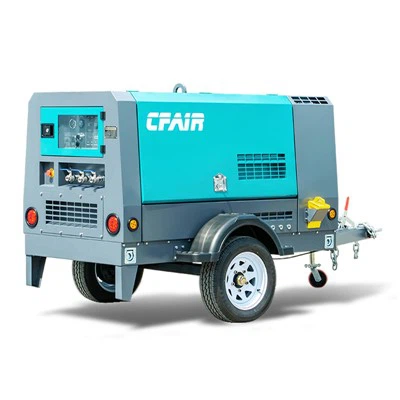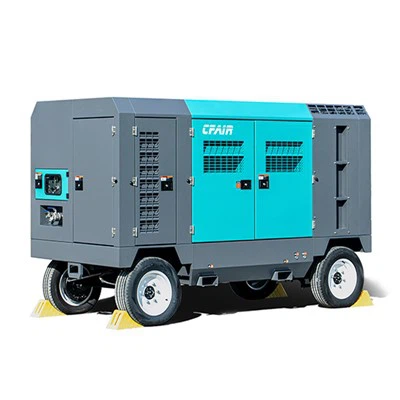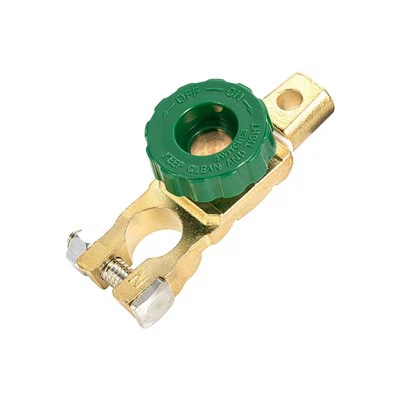The airflow rate of T4F air compressors is a crucial parameter that directly impacts their performance and suitability for various applications. As a trusted supplier of T4F air compressors, we understand the significance of this metric and are here to provide you with in - depth insights.
Understanding Airflow Rate
Airflow rate, often measured in cubic feet per minute (CFM) or liters per minute (LPM), indicates the volume of air that an air compressor can deliver at a specific pressure level. It is a key determinant of how quickly an air compressor can fill a tank or power pneumatic tools. In the context of T4F air compressors, a higher airflow rate means the compressor can supply more air in a given time frame, enabling faster operation of connected equipment.
Factors Affecting the Airflow Rate of T4F Air Compressors
- Compressor Design:
The design of T4F air compressors plays a vital role in determining the airflow rate. For instance, Compressor Screw models are engineered with precision to optimize the compression process. The screw elements in these compressors are designed to efficiently trap and compress air, which can lead to a relatively high airflow rate compared to some other compressor types. - Motor Power:
The power of the motor driving the compressor is directly related to the airflow rate. A more powerful motor can drive the compression mechanism at a higher speed, allowing the compressor to intake and compress more air per unit of time. T4F air compressors are available with a range of motor powers, and customers can choose a model based on their required airflow rate. - Pressure Settings:
The airflow rate of T4F air compressors is also affected by the pressure at which the compressor is operating. Generally, as the pressure increases, the airflow rate decreases. This is because more energy is required to compress the air to a higher pressure, leaving less capacity for the compressor to move a large volume of air. Therefore, when specifying the airflow rate, it is essential to consider the operating pressure.
Airflow Rate Specifications of Different T4F Air Compressor Models
- Commercial Air Compressor:
Our Commercial Air Compressor models are designed for heavy - duty applications in commercial settings. These compressors typically have a relatively high airflow rate, ranging from 10 to 50 CFM or more, depending on the specific model and motor power. This high airflow rate makes them suitable for powering multiple pneumatic tools simultaneously, such as nail guns, impact wrenches, and spray guns. - Double Screw Compressor:
The Double Screw Compressor models in the T4F series are known for their efficiency and high - performance capabilities. They often feature a high airflow rate due to the double - screw design, which allows for a more continuous and smooth compression process. These compressors can have an airflow rate of 20 to 100 CFM or even higher, making them ideal for large - scale industrial applications where a large volume of compressed air is required.
Applications Based on Airflow Rate
- Light - Duty Applications:
For light - duty applications such as inflating tires or operating small pneumatic tools like airbrushes, a T4F air compressor with a lower airflow rate (around 1 - 5 CFM) may be sufficient. These compressors are usually more compact and portable, making them suitable for home workshops or small - scale DIY projects. - Medium - Duty Applications:
In medium - duty applications, such as powering a single pneumatic impact wrench or a paint sprayer in a small - to - medium - sized automotive repair shop, an air compressor with an airflow rate of 5 - 15 CFM is typically required. T4F offers a range of models in this category to meet the needs of these applications. - Heavy - Duty Applications:
Heavy - duty applications in industrial settings, such as running multiple pneumatic tools on a factory assembly line or powering large - scale pneumatic machinery, demand air compressors with a high airflow rate (15 CFM and above). Our T4F commercial and double - screw compressors are well - suited for these demanding applications.
Importance of Selecting the Right Airflow Rate
Selecting the right airflow rate for your T4F air compressor is crucial for several reasons. Firstly, if the airflow rate is too low, the compressor may not be able to supply enough air to power the connected equipment effectively. This can result in reduced tool performance, longer operation times, and increased wear and tear on the equipment. On the other hand, if the airflow rate is too high for the application, it can lead to unnecessary energy consumption and higher operating costs.
How to Determine the Required Airflow Rate
To determine the required airflow rate for your specific application, you need to consider the following steps:


- Identify the Pneumatic Tools:
List all the pneumatic tools that will be connected to the air compressor. Check the manufacturer's specifications for each tool to find out the required airflow rate (in CFM or LPM) at the recommended operating pressure. - Consider Simultaneous Use:
If you plan to use multiple pneumatic tools simultaneously, you need to add up the airflow rates of all the tools. However, keep in mind that not all tools may operate at their maximum airflow rate all the time. You can make a conservative estimate based on the typical usage pattern. - Factor in Future Expansion:
If you anticipate expanding your operations or adding more pneumatic tools in the future, it is advisable to choose an air compressor with a slightly higher airflow rate than your current needs. This will provide some flexibility and prevent the need for a compressor upgrade in the near future.
Conclusion
The airflow rate of T4F air compressors is a critical factor that influences their performance and suitability for different applications. As a supplier, we offer a wide range of T4F air compressor models with varying airflow rates to meet the diverse needs of our customers. Whether you are a DIY enthusiast, a small - business owner, or an industrial operator, we can help you select the right air compressor based on your required airflow rate.
If you are interested in purchasing a T4F air compressor or have any questions about airflow rates and compressor selection, please feel free to contact us for a detailed consultation. Our team of experts is ready to assist you in making the best choice for your specific requirements.
References
- Compressor Handbook, various editions.
- Manufacturer's specifications for T4F air compressors.






